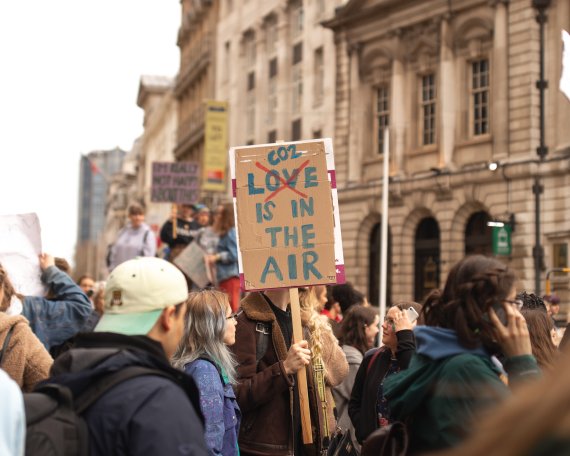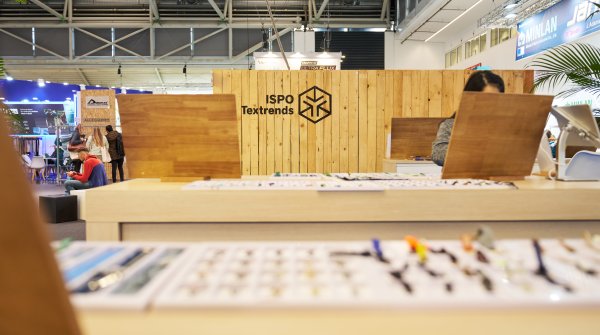Web 3.0, also known as the decentralized web, emphasizes ownership and management of data by or for users. This enables greater transparency and trust for consumers towards brands, while forcing brands to make their online sales channels more effective and also to analyze the accuracy of sourcing data in less time.
"When it comes to corporate social responsibility, we need to be ready now to stay competitive on the maturity curve." - Daniel Harari, CEO Lectra™ at the European launch of Textile Genesis
Every responsible manager has a system of controllable measures. Outside the environmental and social target framework, both strategic targets and ESG's terms have only recently become effective. At a time when change is urgent and tensions are prevalent in the textile industry, these new transition success indicators need to be managed through digital tools. Whether it's CO₂ emissions, circular economy and lifecycle analysis, pattern nesting optimisation, material composition of recyclable waste, or marketing resources, smart tech is creating a scientific foundation and algorithm - early approaches are already in place. To measure the transition from a linear to a circular model, the Ellen MacArthur Foundation has developed Circulytics™, a measurement tool to assess and track companies' circular performance. This method provides a comprehensive assessment of current circular performance and identifies areas for improvement. If you want to test your brand's visibility, there's Launchmetrics™ for that.
One of the most important features is the ability to track and measure the media exposure of a brand or product. Using sophisticated algorithms, the platform collects and analyzes data from a variety of sources. Combined with environmentally responsible performance indicators, this could target the right influencers and communication channels and, by reaching the right audience, reduce greenwashing in communications and reduce product returns.
"Climate transition represents a huge addressable market but we recognize the urgent need to develop practical tools that can enable organizations to transition to a climate-resilient economy and benefit society at large." - Source World Economic forum, Carl Hess on climate action.
One thing is certain: we are moving toward data that is based on scientifically proven results and focused on climate and societal action. This data should enable us to achieve a potential "net-zero" target for textile and plastics production in the outdoor and sportswear industry. But there are also issues that require more flexible and less tangible action plans.
For example, if we think about cultural appropriation and inclusivity, the Rei™ brand wants to set a standard for inclusivity in its brand standard goals for 2023 - using creative control tools that take into account the participation of members of the respective community in the development of ideas, patterns, products, marketing support, etc., especially for BIPOC (Black, Indigenous and People of Colour).

The law on environmental labelling with the product passport, the regulations on environmental performance and CO₂ footprint (PEF: Product Environmental Footprint) or the CSRD (Corporate Sustainability Reporting Directive) for the declaration of non-financial performance are adopted by the brands that must comply with these new rules.
Thanks to ACV and its commitment against microplastics and for circularity, certain points could be adapted. In fact, the regulatory obligations of traceability to rank 3 and the distribution of recyclable recycled materials require a vision and more efficient tools. Thus, companies such as Textile Genesis or Viji K3 support fibre traceability at least to rank 3 using blockchains - Genesis textiles, even to rank 5 for some fibres. On the energy mix side, the Picture Organic™ brand provides access to an energy source and CO₂ emissions tracking tool on its website.
In France, the analysis of the level 3 CO₂ footprint is now mandatory for companies with more than 500 employees*. The calculation method must be based on the ISO 14083 standard and its revised version published in 2023. The publication of the CO₂ analysis must be accessible and serve the purpose of environmental presentation. Beyond this approach, more and more sports and outdoor brands are adopting a decarbonization policy in purchasing. Smart tech can help create information management systems and supply chain monitoring. According to the ICS (Initiative for compliance and sustainability) for factories, different steps need to be managed, the factory needs to estimate its energy consumption for each department, area and process, and also provide training to employees* for good practices on site and in production.
These measures are adapted for Europe and all this information can be tracked and stored thanks to the blockchain. Then, everything will be summarized in a product passport, such as the one already offered in France by Fairly Made™. On the brand side, Picture Organic, with its product range bearing the message "Born in XX PPM" (CO₂ in parts per million), has made the disclosure to make it a bit more tangible and desirable, denounces the rising curve of greenhouse gas emissions, and defends products designed without PFCs (perfluorocarbons and poly fluorocarbons), which cause large greenhouse gas emissions during their production and end-of-life disposal.
"If 5% of European products had an eco-label and were designed in an environmentally friendly way, we would save the pollution of about 12 billion liters of water and CO2 in an amount equivalent to the emissions of one million Europeans*." - ADEME
Whether through blockchain or science-based targets: Supply chain traceability is key to transforming the fashion industry. Once these tools are captured, production data can be made more accessible and accurate, as information recorded on the blockchain is available to all authorized participants*. Brands can share detailed information about their production practices, certifications, and sustainability commitments, building consumer trust*. Another way to improve traceability is to rely on the science and DNA of the source and its environment. Oritain™ is a forensic testing solution that measures natural concentrations of trace elements and atomic types of the same element isotopes. For materials of natural origin, plant or animal materials and their fibres absorb the chemical composition of their surrounding natural environment. A raw material (plant or animal) is different from one that comes from another plantation, even if it is only a few meters away. This enables true traceability of fibre-based products. Several industry organizations, such as Supima™ and Cotton USA™, are using these innovative systems to help trace their cotton fibre. On an industrial level, these innovations will save time to implement regulations that are gradually becoming mandatory throughout Europe.
Currently, Web 3.0 is an indispensable tool for e-commerce. It is already very advanced in the luxury and sports sectors and, thanks to blockchain, it allows the personalization of systems and the transfer of the authentication of information and property to the digital world. With its advanced features, it is a major asset for traceability, providing a more transparent and flexible value chain in terms of fibre origin and production. The Metaverse is a virtual meeting place where the physical and the digital can merge and a community can come together. Combined with technological design and NFT (Non-Fungible Token) tools from the blockchain, strong interoperability is possible for sports and outdoor brands. Brand ambassadors and athletes can also benefit from their personal brand, as Michael Jordan recently did with his He/r application, launched in 2022. Web 4.0 is not yet operational, but is already occupying the innovation departments of major digital corporations. This will be the next industrial revolution of digital augmentation thanks to artificial intelligence. Web 4.0 and virtual reality will certainly go beyond the world of locker rooms and e-commerce.
Between risk management and challenges, ensuring accountability for traceability, and partnering with science, transparency and traceability must be tracked across a long value chain with relevant metrics and flexible frameworks - to help brands execute and, most importantly, avoid greenwashing. This can increase channel management, personalization and exclusivity of certain product developments, and storytelling. Even though e-commerce has not displaced the presence of physical stores, there is still a tangible need to touch and try on clothing and accessories. Moreover, it is probably too early to think about widespread adoption of these new consumption methods. However, traceability and Web 3.0 innovations are paramount in the fashion industry and will contribute to the revolution of certain manufacturing methods, while preserving the goals of sobriety and impact reduction. They promote transparency, sustainability and accountability, allowing consumers to make more informed choices and brands to demonstrate their commitment to ethical and sustainable practices. And may one day make the difference in attracting investors.
 SportsTechUnlocking the Future of Sports with AI
SportsTechUnlocking the Future of Sports with AI
- ISPO awards
- Mountain sports
- Bike
- Design
- Retail
- Fitness
- Health
- ISPO Job Market
- ISPO Munich
- ISPO Shanghai
- Running
- Brands
- Sustainability
- Olympia
- OutDoor
- Promotion
- Sports Business
- ISPO Textrends
- Triathlon
- Water sports
- Winter sports
- eSports
- SportsTech
- OutDoor by ISPO
- Heroes
- Transformation
- Sport Fashion
- Urban Culture
- Challenges of a CEO
- Trade fairs
- Sports
- Find the Balance
- Product reviews
- Newsletter Exclusive Area
- Magazine






